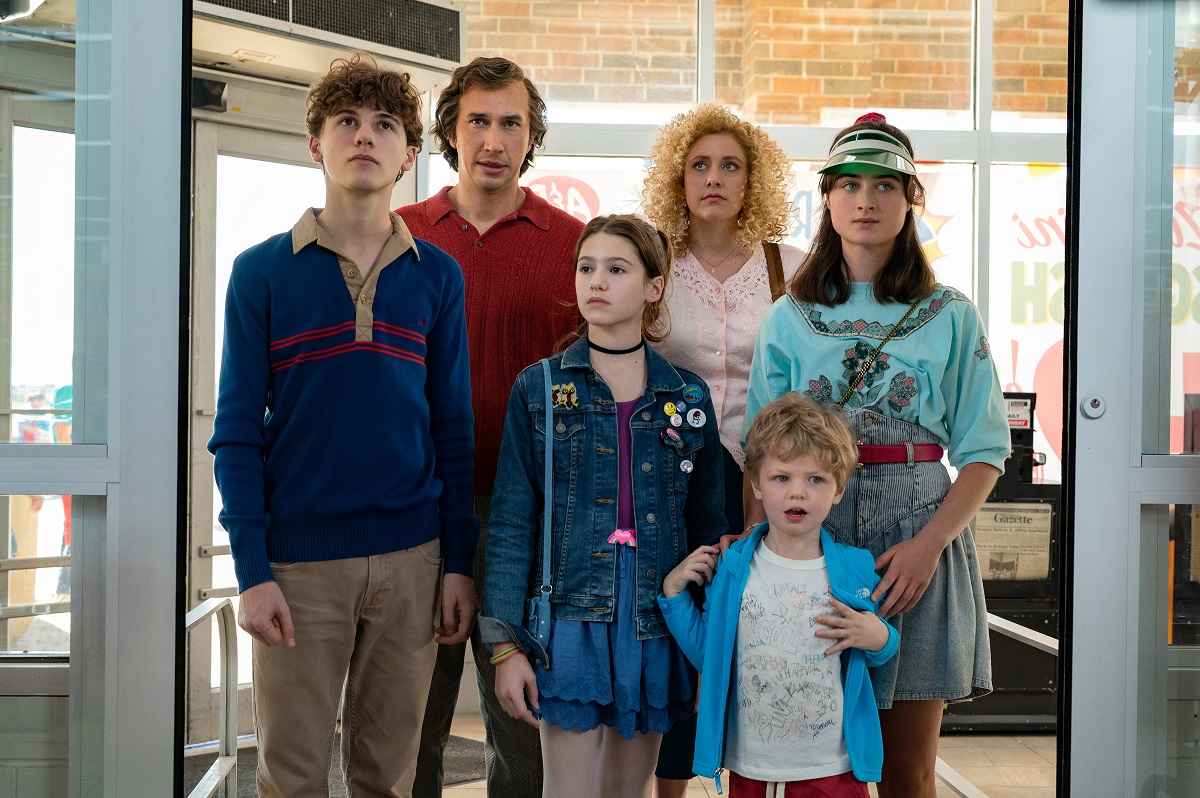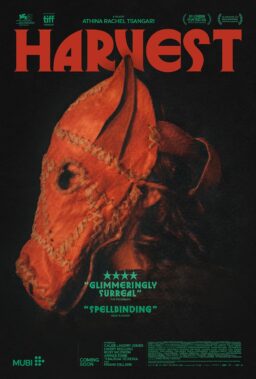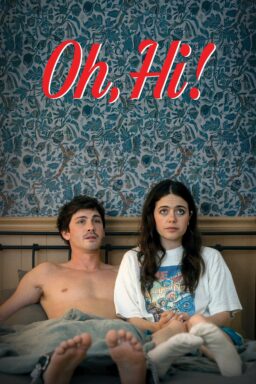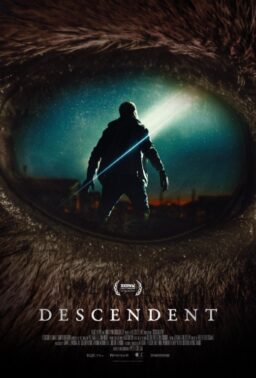The New York Film Festival always seems to arrive at the perfect time, just as summer’s heat and humidity fade and fall’s enlivening crispness settles in. Having covered the festival for decades, I’m always gladdened to approach Lincoln Center anticipating not only a bracing batch of new films from around the world but also the celebratory mood among filmgoers and critics that the combination of seasonal and cinematic pleasures seems to induce.
This year’s festival, its 60th edition, finds the event back in its accustomed form after two years of disruption by the COVID-19 pandemic, but also undergoing under further leadership changes. After a half-century with only two pilots at the helm (Richard Roud and Richard Pena each served 25 years as the festival’s head), the NYFF witnessed a decade of more rapid evolution, both in terms of its programming and those in charge. The latest shift at the top came with the recent announcement that festival director Eugene Hernandez was leaving to become the head of the Sundance Film Festival. A mainstay in the New York film community for years before his work with Film at Lincoln Center, Eugene’s friendly, welcoming presence will be missed by many. Although his tenure did include the regrettable shuttering of Film Comment’s print edition, his steady hand was an invaluable asset in steering the festival through the rough waters that the pandemic brought to both filmmaking and New York.
Otherwise, it strikes this critic that the 2022 festival is notable for two puzzling changes already causing perplexity in various quarters. One has to do with how the NYFF presents its offerings to the press, a method that, for the first time ever, makes it virtually impossible for critics to see everything in the Main Slate. Unfortunately, this wastes one of the festival’s distinct advantages. While competitors like Sundance, Tribeca, Toronto, and the big European festivals host scores or hundreds of titles and thus can press-screen only a fraction of them, New York’s Main Slate has traditionally contained only around 30 films. In the past, its press screenings would run four weeks, with two, three (or rarely, four) films per day screening on weekdays. This year, though, for reasons unknown, the screenings are crammed into three weeks, with four, five, six and even seven films unreeling per day. Moreover, some films are screened in competition with each other: while a Main Slate film plays in the Walter Reade Theater, a film from one of the festival’s other sections (Currents, Spotlight, Revivals) will show at another venue.
This is hectic, exhausting, and, above all, unnecessary. As I can testify, critics who are longtime fans and supporters of the NYFF have appreciated its relative user-friendliness for those covering it. Seeing all of its main attractions, or close to it, may have been challenging, but it was at least possible. This punishing new regimen has occasioned mainly complaints and hopes that the fest will revert to the status quo ante next year.

The other puzzling change is the absence of world premieres in the festival’s main slots: Opening Night, Centerpiece and Closing Night. Many top-tier festivals of course demand world premieres for every film in their main sections. Though New York never had the clout to do that, it held onto the practice in its main slots, as a matter of pride and prestige. Oddly, this year’s Opening Night selection, Noah Baumbach’s “White Noise,” not only premiered last month at the Venice Film Festival, it was the Opening Night selection there too. (Some observers have wondered if the power of Netflix, the film’s distributor, had anything to do with its unusual festival prominence this season. Interestingly, the NYFF’s printed program this year doesn’t mention distributors of any films. That’s a first too, I think.)
While previous Opening Night films have had the privilege of arriving as unknown quantities, “White Noise” was preceded by its Venice reviews, which were notably less enthusiastic than those for other films at the festival such as Todd Field’s “TÁR” (which plays the NYFF next week). Common themes in the critical reaction were that the great success of Baumbach’s last film, “Marriage Story,” was almost bound to make any follow-up seem weaker by comparison; and that a kindred risk lay in the fact that, for the first time ever, Baumbach was adapting another writer’s work—Don DeLillo’s acclaimed 1985 novel, which has sometimes been described as “unfilmable.”
To a large extent, I share those judgments. Like many critics, I regarded “Marriage Story” as Baumbach’s first flat-out masterpiece, a semi-autobiographical film of extraordinary ambition and accomplishment. In terms of its direction, “White Noise” shows him working at an equally high level. It’s a big, sprawling extravaganza of a movie, and Baumbach’s handling of numerous set pieces (including complex crowd scenes and elaborate special effects), like his work with a cast led by frequent (and excellent) collaborators Adam Driver and Greta Gerwig, is exemplary.
The problems mainly derive from the material. Unfolding in three capacious acts, the 1980s-set tale centers on Jack Gladney (Driver) and his wife Babette (Gerwig). Residing in a bucolic college town, they are both are on their fourth marriages and have a brood of kids. His academic specialty is Hitler Studies, and if that suggests a satire of academia, that indeed is a key element of the film’s first section. The tone, though, shifts markedly in the second act, when the family is forced to join a chaotic mass exodus from their town due to an environmental catastrophe (here’s where the FX come to the fore). In the final part, the spouses confront their mutual fear of death as Jack vows to go from victim to murderer.
The influence of cinema on DeLillo’s fiction is well-known, and no doubt helps account for filmmakers’ attraction to his work. But the number and variety of those influences produce challenges that Baumbach’s script can’t overcome. A pastiche that embraces everything from satire to sci-fi to social commentary to psychodrama to surreal comedy can work on the page in a way that only reads as a strained mishmash when transferred to the screen, evoking comparisons to directors as disparate as Woody Allen, Wes Anderson, and David Lynch. But for any filmgoer tempted to bail out of “White Noise” before the end, I have one piece of advice: don’t. The film’s single best scene, which leads into and plays through its end credits, is a gigantic, supermarket-set musical number worthy of Frank Tashlin. (This delight demands to be seen in a theater; I can’t imagine how it will work on Netflix.)

From one angle, it might seem that Kelly Reichardt was heading into a challenge not unlike that facing Baumbach: her last film, 2020’s “First Cow,” was her biggest critical success to date, winning Best Film from the New York Film Critics Circle. But “Showing Up,” her latest, is so different from its predecessor–which was a twisty tale of male friendship and striving in the Pacific Northwest of the 1820s–that it beggars any comparison. Rather than being period-set, it’s contemporary; instead of being focused on men, it deals with female friendship, family and community; and where the previous film was bovine-centric, here the non-human leads are a cat and a pigeon.
In her fourth collaboration with Michelle Williams (after “Wendy and Lucy,” “Meek’s Cutoff,” and “Certain Women”), Reichardt casts the actress as Lizzy, a sculptor leading a low-key life in the laidback artistic environs of Portland, OR. Lizzy’s best friend (or is she simply the nearest, geographically?) Jo (Hong Chau), is also her landlord, one who hasn’t fixed Lizzy’s broken water heater in two weeks. Their relationship is additionally complicated by the fact that Jo has rescued a pigeon that (unbeknownst to her) Lizzy’s cat has mauled. As if these minor-key trials were not enough, Lizzy faces the pressures of preparing for an upcoming show and the various perplexities presented by her dad (a delightful turn by Judd Hirsch), mom and unhinged brother.
Although its setting might suggest the potential for a stinging arts-scene satire, Reichardt’s approach is instead scrupulously subtle and drolly observant. The community that surrounds Lizzy abounds in characters intent on exercising their creativity whatever may be going on in the wider world, and the film describes them with gentle, keen-eyed accuracy (the casting of even the smallest roles is one of the film’s marvels). As for Lizzy, her wardrobe sets a new standard in boho frowsiness (I was waiting for the scene in which she wasn’t wearing socks, but it never came) and she virtually never smiles. But the understated care she devotes to her art and her closest relationships, especially her problematic brother, evoke a strong inner life that has no need of outward showiness.
Reichardt’s art might be described similarly (and indeed her work with Williams, which has produced such rich results over four films, here almost seems to comprise a joint artistic credo). Her light-handed touch conveys the confidence of a filmmaker at the peak of her powers. She is certainly one of American cinema’s greatest talents, and “Showing Up” can only add to the ranks of her admirers.

So far, this is a very good year for female filmmakers at the NYFF, as also illustrated by debut films from two European directors. “Saint Omer,” by France’s Alice Diop, a filmmaker previously known for her acclaimed documentaries, is a searing contemporary drama focused on two black women: A Senegalese immigrant (Guslagie Malanga) charged with drowning her baby daughter and a professor/journalist (Kayije Kagame) who sets out to write a report on the trial. The case provides a powerful, harrowing tale of human suffering that touches on all sorts of issues involves class, gender and culture. Filmed with a steady, almost forensic intensity, the courtroom drama of the film’s first half is the most riveting hour I’ve spent in a film this year. Ultimately, I don’t think the film’s challenging elements come together as well as they might, but it is still a formidable accomplishment, one that immediately establishes Diop in the forefront of French cinema.
The other impressive European debut, “Aftersun” by Scotland’s Charlotte Wells, is an autobiographical fiction about a Scottish girl (Francesca Corio) and her divorced father (Paul Mescal) sharing a week’s vacation in a Turkish resort. While the tale proceeds with an unhurried, anecdotal casualness that perfectly captures the sensual pleasures and random encounters of a welcome holiday, its focus on the two central characters provides a rich, poetically oblique view of a relationship that is strong and loving but also characterized by underlying tension. Boosted by the strong performances of its two leads, the film also benefits from the style supplied by Wells’ supple, exacting visuals and Blair McLendon’s razor-sharp editing. It occurred to me later that some reviewers might fault “Aftersun” for paying zero attention to the culture and people of the country where the story takes place, but I’m betting that the film’s considerable strengths will go a long way toward silencing such objections.
Along with “Aftersun” and last year’s “The Lost Daughter,” “Triangle of Sadness,” by Sweden’s Ruben Ostlund, suggests a demi-genre of films by northern European directors who want to make a movie while also enjoying a nice Mediterranean vacation. In this case, though, the decision doesn’t turn out to be so salutary. Though the film won the Palme d’Or at Cannes, one critic who saw it there described it as “one of those love it or hate it movies.” Since I admired Ostlund’s previous films “Play,” “Force Majeure,” and “The Square,” I was surprised to find myself in the latter camp. And for a way into “Triangle of Sadness,” I didn’t think I would be. The film’s second scene, in which an attractive young couple have an argument over money (ostensibly) in a posh restaurant, is masterful, suggesting a sharply focused relationship comedy-drama to follow.
But all too soon, the same couple is in the Greek islands sunbathing on a luxurious yacht, where a drunken captain (Woody Harrelson) presides over a gaggle of well-to-do international vacationers. The premise holds lots of promise for both comedy and a satire of current mores, of course, but Ostlund’s uninspired handling left me wishing that Robert Altman or Luis Bunuel were in charge. The comedy here is obvious and contrived, the satire hardly worth the name. And that’s while the voyagers are at sea. When they unexpectedly end up on land, the whole the thing devolves into an overlong farce that plays like the Eurotrash version of “Gilligan’s Island.”
But it looks like the company probably had a great vacation.












